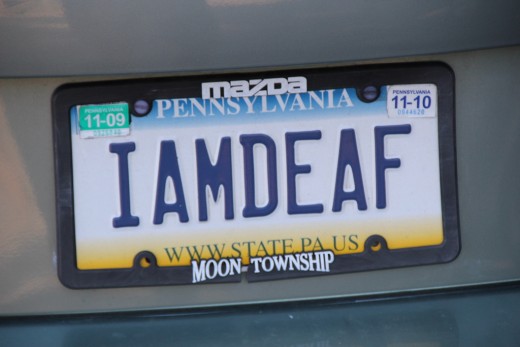Deaf History Month is March–April: Over 200 Deaf Sign Languages

Deaf History Month (USA) March 13 to April 15
It is quite common for most of us to know someone who is deaf or hard of hearing. But how many of us realize that there are hundreds of deaf sign languages!
Deaf History Month is celebrated annually in the USA from March 13 to April 15. It started in 1997 when the D.C. Public library invited deaf authors and speakers. Celebrations are still primarily limited to libraries, although there have been efforts to get the White House to declare it officially.
Deaf History Month commemorates three events that happened during that month.
- On April 15, 1817, America opened its first public school for the Deaf.
- On April 8, 1864, President Lincoln signed the charter for the first college for the Deaf, Gallaudet University.
- On March 13, 1988, Gallaudet University received its first Deaf President, King Jordan.
deaf vs. Deaf
It is important to distinguish deaf from Deaf (capitalized). People who are deaf cannot hear anything audibly. The causes may be illness, accident or birth defect, but none of them can hear any sound whatsoever.
Those who are Deaf, on the other hand, include hearing and partial hearing individuals as well as those who are audiologically deaf. Some of these may have a deaf family member or otherwise choose to identify with a linguistic and cultural group that uses a signed language.
Sign Languages
| Manually-signed Languages
|
|---|---|
Dutch Sign Lanuguage
| Signed Dutch
|
American Sign Lanuguage
| Signed English
|
British Sign Lanuguage
| Signed English
|
Australian Sign Language
| Australian Signed English
|
Sign languages vs. signed languages
A common misconception is that all signed languages are manually-spelled variants of the local language, in which each symbol corresponds to a written letter of the alphabet. Such languages certainly exist and are necessary for unusual words, but conversing entirely in such fashion would be a very slow and tiring way to communicate!
Note the subtle naming conventions between Deaf sign languages and manually-signed (spoken) languages. For example, Signed Dutch is a variation of spoken Dutch that is manually-signed. Dutch Sign Language is the sign language used by the Deaf community in the Netherlands. Having said this, however, it can be said that both are signed languages. Sign languages are signed lexically—a sort of whole-word method—and the other alphabetically—like the spoken language.
How many signed languages are there?
More than 200 signed languages, used by 4.3 million people, have been observed in use by Deaf communities in more than 100 countries around the world. Linguists estimate that there may actually be more than 400 signed languages in use.
Language survey specialists who collect data about signed languages are discovering previously undocumented languages at an astonishing rate. Methods of surveying to collect data and distinguish between various signed languages are undergoing development and refinement.
French Sign Language was the first (in 1830) to receive recognition as a bona fide language, although it originated in 1752 and France had other signed languages at least two centuries earlier.
Sign Language Puzzle
view quiz statisticsHow do they differ?
While spoken languages differ in both lexicon and syntax, sign languages differ primarily in the symbols and gestures used to represent words in the lexicon.
The syntax and grammatical structure of all sign languages worldwide more closely resemble each other than they do the national languages of the countries in which they are used. American Sign Language and British Sign Language, e.g. are not mutually intelligible, although American English and British English are (as long as you can get over the way they’re spelt!).
Recemmended article
- Sign language words & phrases: British and American signs
Linguistic features of sign languages, including American Sign Language. Overview of several types of manual systems.
Learning to read and producing Deaf literature
For audiologically deaf persons who have been raised Deaf, learning to read involves more than letter-recognition and word-recognition skills. They must also learn how those words are strung together in print. It is, after all, completely unrelated to the way they string together symbols and gestures in any signed language they have been raised with. Hearing people are learning to read a language they can already understand and speak; the Deaf are learning to read a language they don’t even know.
As a relatively new field, research and development of printed materials in sign languages lag behind those for spoken languages.









